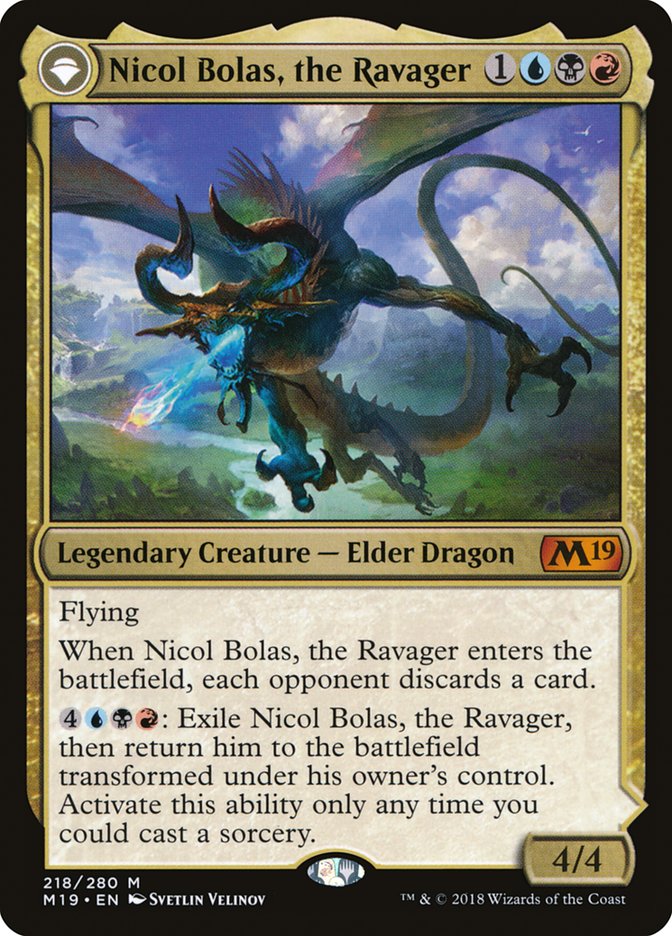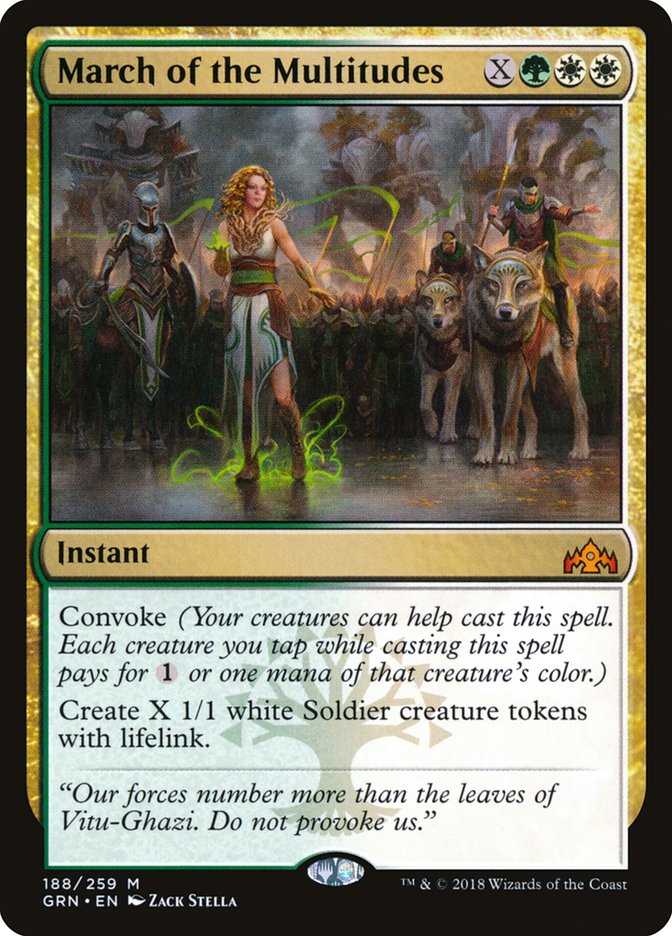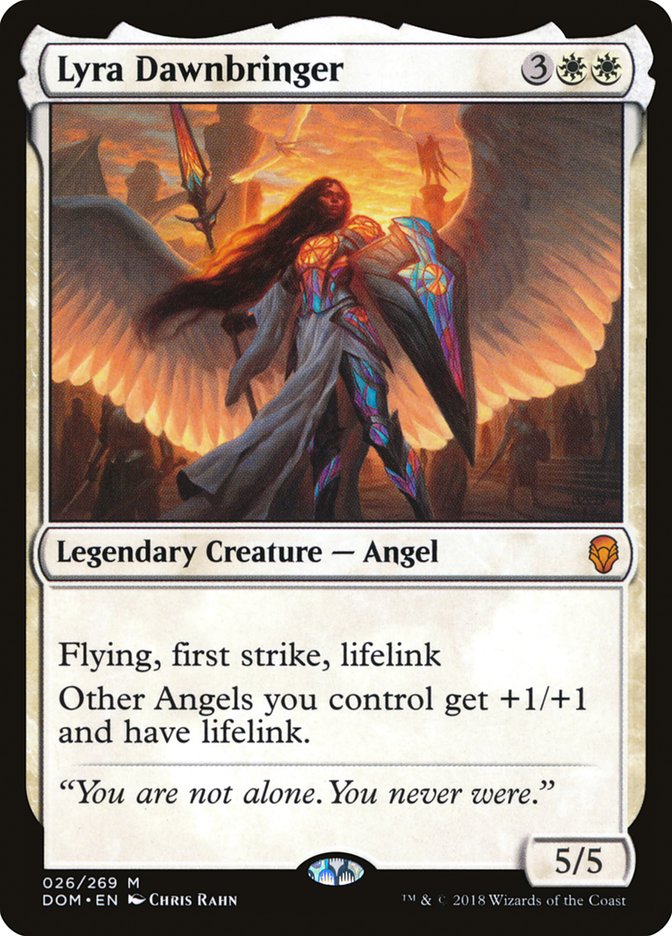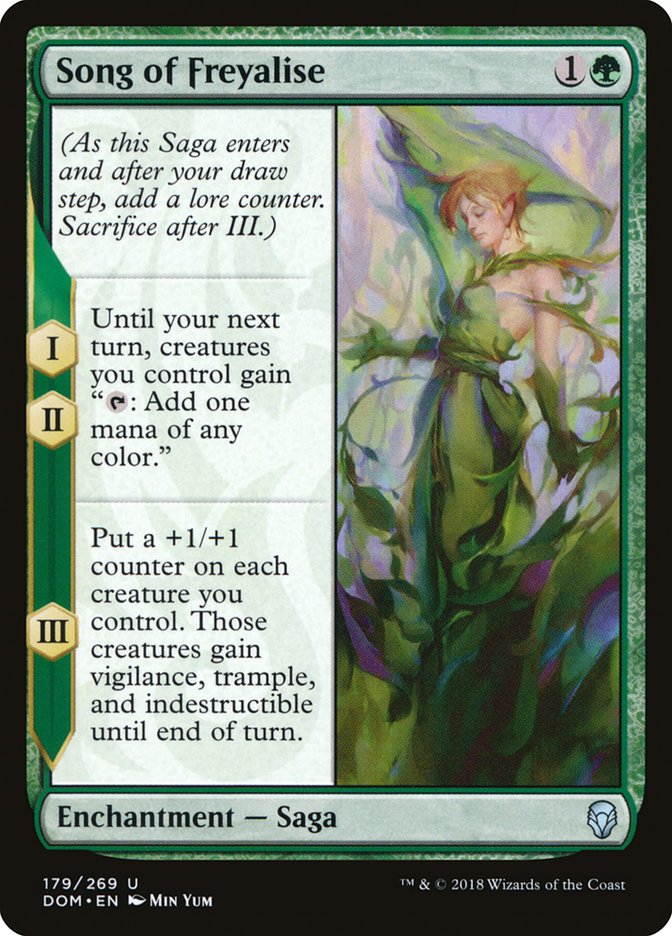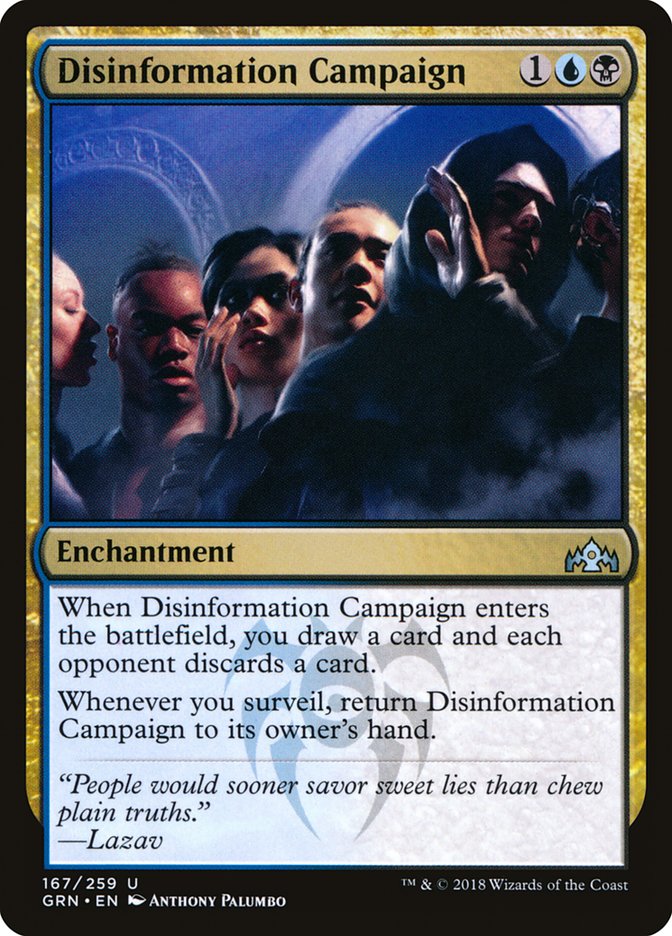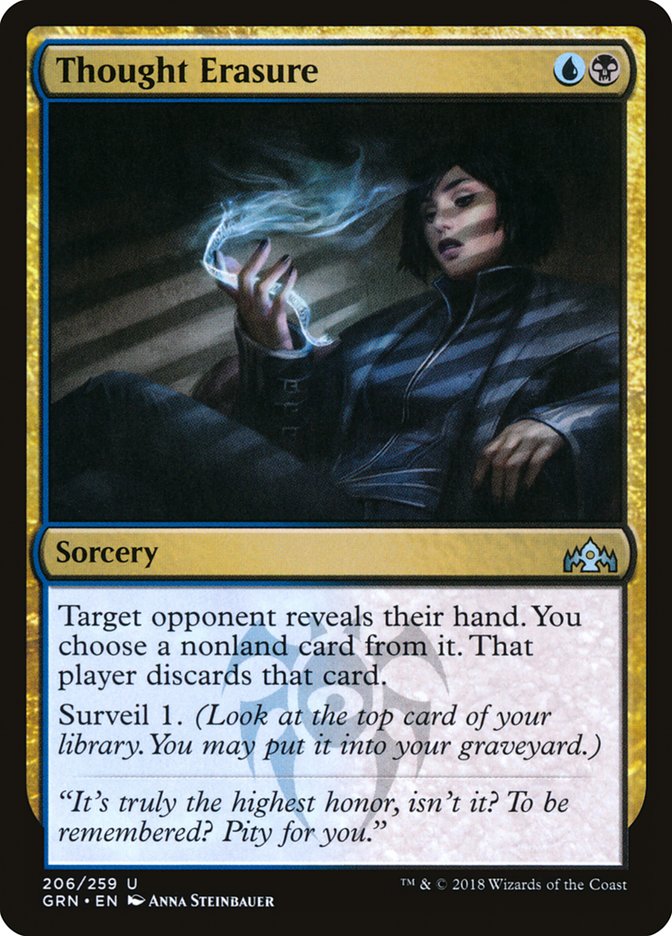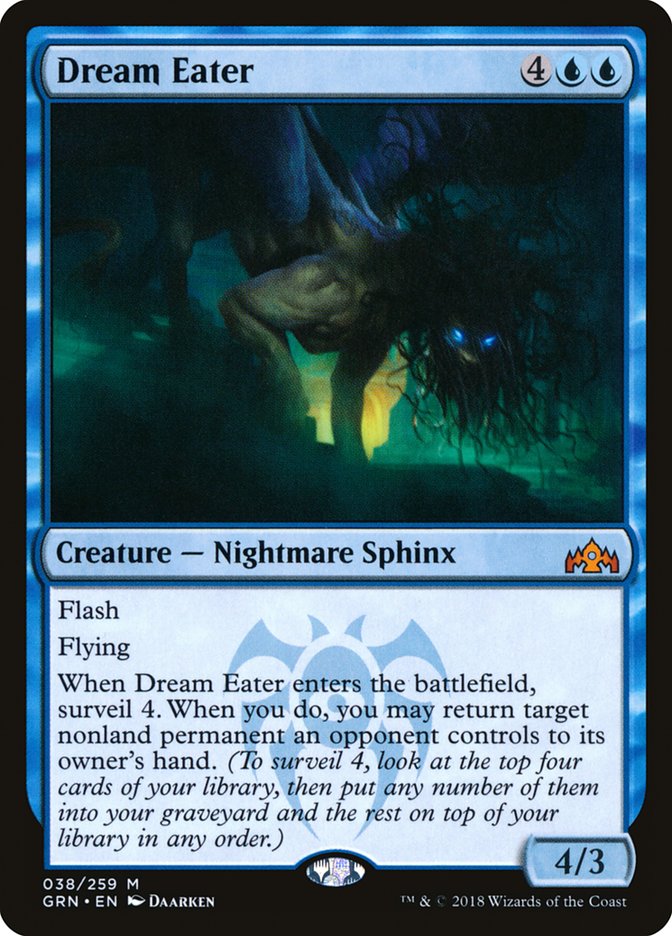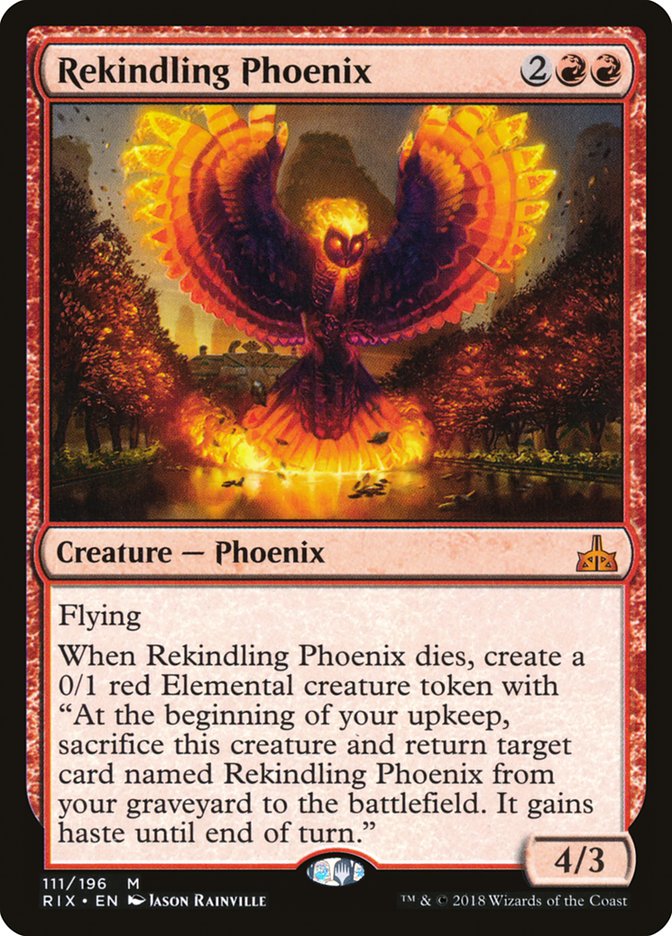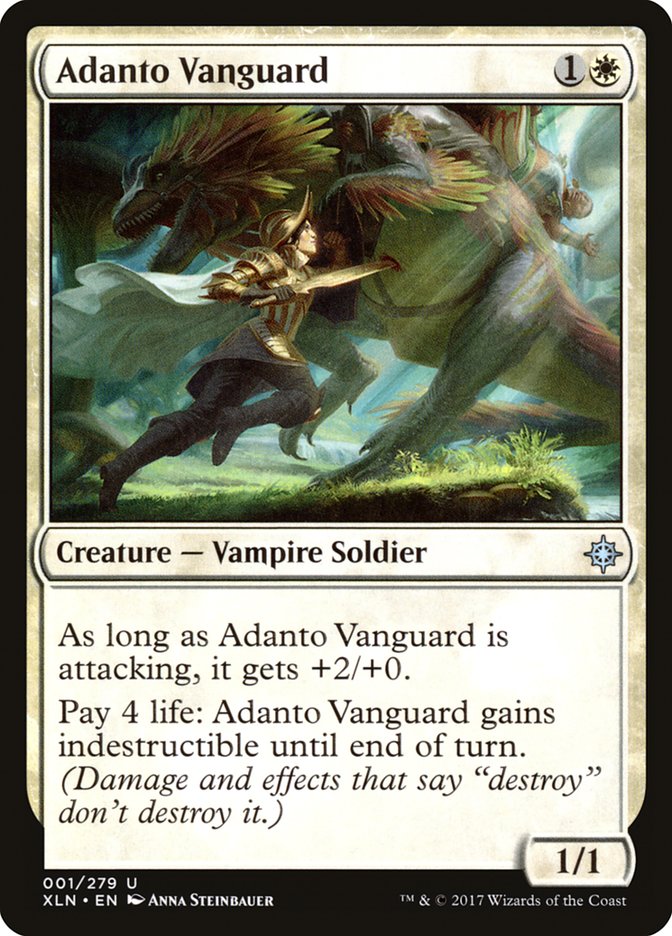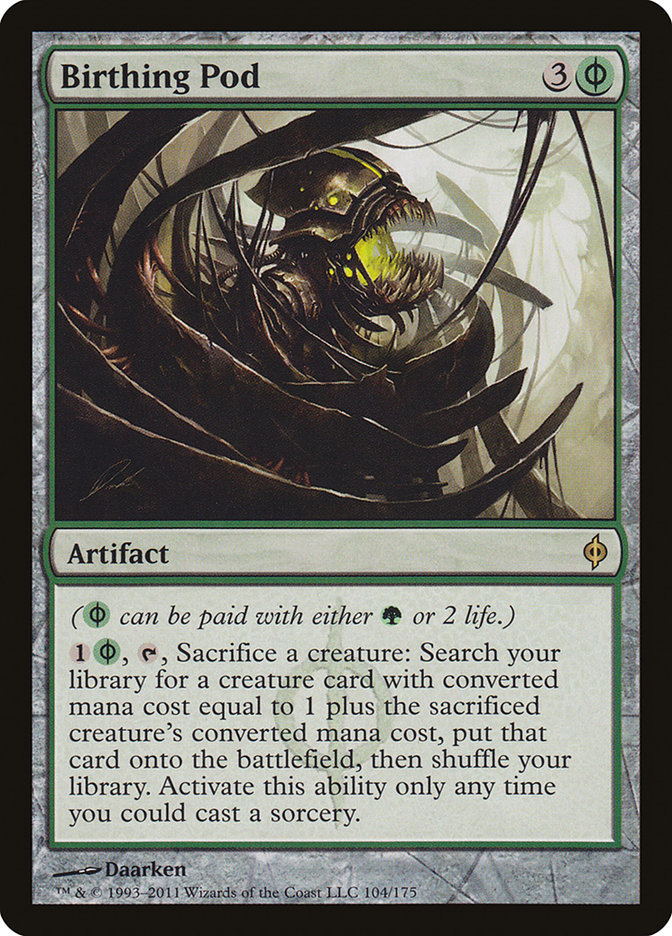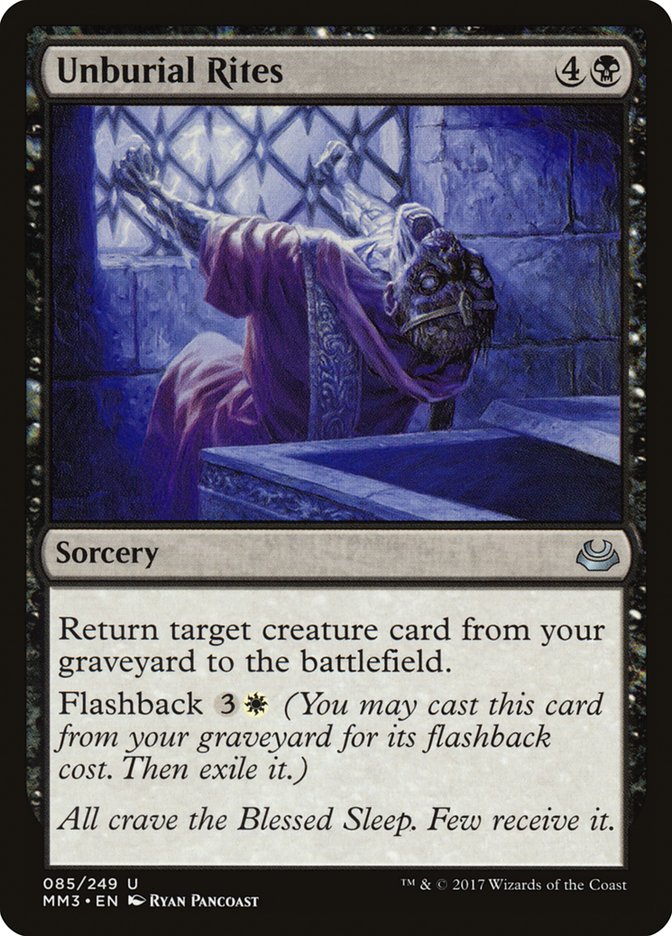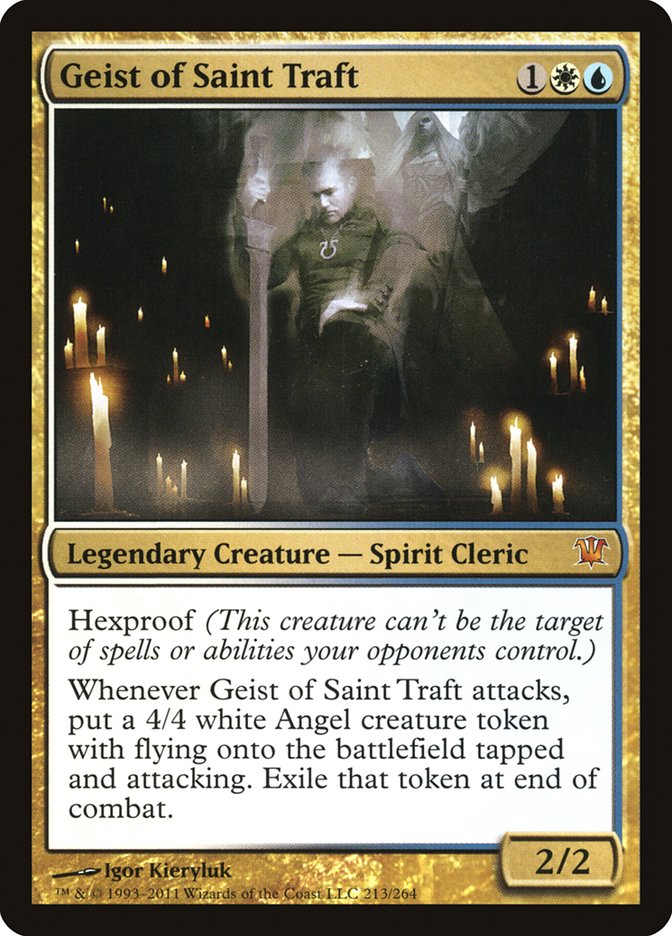Week after week I have been nothing but impressed by Guilds of Ravnica Standard. There has been so much room for
innovation and good deckbuilding to shine that it’s starting to make me
worry we’ll never see another Standard quite like this one again.
This Standard format reminds me a lot of some of my favorite Standard
formats I played and watched in my youth, whether that was the Sphinx’s
Revelation era or Innistrad Standard with Azorius Delver, there’s
something really cool about seeing so many decks on such an equal power
level. Standard is often a format defined by tiers, and while those formats
were much closer to “Best Deck” formats where there was a correct choice of
what to play sitting alone at tier 1, this Standard format is better than
that. We have four different tier 1 decks to choose from between Jeskai
Control, Golgari Midrange, Izzet Drakes, and Boros/Mono-White Aggro.
Creatures (7)
Planeswalkers (3)
Lands (25)
Spells (25)

Creatures (24)
- 4 Llanowar Elves
- 1 Carnage Tyrant
- 4 Wildgrowth Walker
- 4 Merfolk Branchwalker
- 2 Seekers' Squire
- 4 Jadelight Ranger
- 2 Ravenous Chupacabra
- 3 Doom Whisperer
Planeswalkers (2)
Lands (24)
Spells (10)

Creatures (12)
Lands (21)
Spells (27)

Creatures (28)
- 4 Ajani's Pridemate
- 4 Adanto Vanguard
- 4 Skymarcher Aspirant
- 4 Benalish Marshal
- 4 Leonin Vanguard
- 4 Healer's Hawk
- 4 Venerated Loxodon
Lands (20)
Spells (12)

That’s not the impressive thing to me though. What really impresses me is
that there are so many decks that can compete with tier 1 sitting just a
little below them in tier 2. When people hear someone call their deck or
their brew “tier 2” I feel like there is a huge negative connotation behind
it. It’s very dismissive and it doesn’t tell the whole story about how good
or bad a deck is. Historically, it probably didn’t matter because in
Standard, playing a tier 2 deck was actually a bad thing and your brew was
probably bad (I sure know mine were), but Guilds of Ravnica
Standard is entirely different.
Rather than a tier 1 of playable decks followed by a tier 2 of questionable
ones, it feels a lot more like we have a first tier of good decks and a
second tier of playable decks. I want to give this second tier the respect
it deserves because it’s nothing to scoff at either; I could see any one of
these decks having their time on top if the metagame is right for them –
just look at some of the underplayed cards they have access to:
It’s hard to stare so much powerful cardboard in the face and say it isn’t
worth sleeving up just because a few more streamlined decks are fighting
for dominance. If anything, that gives you more reason to come out of the
woodwork with something a little further down the list when people aren’t
giving it respect.
A perfect example of what I mean by this is the performance of Selesnya
Tokens over the weekend:
Creatures (13)
- 1 Lyra Dawnbringer
- 2 Shalai, Voice of Plenty
- 4 Thorn Lieutenant
- 3 Emmara, Soul of the Accord
- 3 Trostani Discordant
Lands (21)
Spells (26)
- 3 Legion's Landing
- 4 History of Benalia
- 3 Song of Freyalise
- 4 Saproling Migration
- 4 Conclave Tribunal
- 4 March of the Multitudes
- 4 Flower
Sideboard

Creatures (14)
Planeswalkers (3)
Lands (21)
Spells (22)
- 3 Legion's Landing
- 4 History of Benalia
- 4 Saproling Migration
- 4 Conclave Tribunal
- 3 March of the Multitudes
- 4 Flower
Sideboard

A deck that seemed to fall by the wayside leading up to the Pro Tour,
Selesnya Tokens flew under the radar and came out on top in a big way over
the weekend in Las Vegas. Zachary Kiihne brought the innovation of putting
Standard’s best two-drop, Adanto Vanguard, into his tokens deck alongside
Ajani, Adversary of Tyrants. This certainly bolstered his matchup against
the midrange decks of the format, but even without these innovations, Nick
Prince’s much more all-in take on Tokens was the winner of the Standard
Classic. Song of Freyalise is one of the many powerful cards from Dominaria that seem like they have a real chance to break out, and
Nick used them to lean into the tendency of Selesnya Tokens to flood the
battlefield rather than shy away from it.
I think that a big part of what made Selesnya Tokens a strong pick for the
weekend had a lot to do with the cards that weren’t showing up in the other
players’ decklists. The Izzet Drakes players all formed a silent pact that
playing Fiery Cannonade wasn’t actually worth putting in their sideboards
because it could ruin their Goblin Electromancers, Golgari Midrange players
might have focused too much on Golden Demise rather than Ritual of Soot,
and now suddenly it doesn’t seem that outlandish to say Selesnya was
well-positioned.
This really illustrates my feelings on what defines what is in the first
tier of Standard and what is defining the second tier. To me, the first
tier are all decks that have all the tools at their disposal and will never
be a bad choice depending on where the metagame is. Players will
lose to an unchecked Teferi, Hero of Dominaria, an unanswered Crackling
Drake, a battlefield flooded with white creatures, or a well-placed Carnage
Tyrant. Being able to do those things in addition to being able to present
the prominent answers of the format or having speed and consistency on your
side is what makes a deck lie in the first tier.
In the second tier, currently there are a lot of decks that either operate
in a similar fashion to the first tier decks but with less
consistency–maybe they are more fragile than some of the first tier decks
or maybe they’re just not as effective as the first tier decks. However, as
the format finds itself in predictable places, understanding the second
tier can be extremely rewarding.
Earlier this week, Ari Lax talked about
how Jeskai Control was really a midrange deck
and why it was the best one to be playing, but perhaps there’s more than
just Golgari and Jeskai to worry about in that category.
Creatures (7)
Lands (26)
Spells (27)
- 1 Spell Pierce
- 4 Vraska's Contempt
- 2 Moment of Craving
- 1 The Eldest Reborn
- 2 Cast Down
- 4 Thought Erasure
- 3 Sinister Sabotage
- 1 Chemister's Insight
- 3 Ritual of Soot
- 4 Disinformation Campaign
- 2 Discovery
Sideboard

Shutao Xiao was among a small group of players to find some success over
the weekend with the midrange road less traveled, backing up the power of
Disinformation Campaign with Nicol Bolas, the Ravager to grind the opponent
out of resources. If Carnage Tyrants get set on the shelf for even a
minute, I think decks like this could make a big move up the ladder from
Classic and PTQ Top 16s to Top 8s fairly quickly. Moment of Craving and
Ritual of Soot are some of the best answers to the white-based decks, and
with a full playset of Thought Erasure and three copies of Dream Eater, Niv
Mizzet, Parun doesn’t even seem like too much trouble to fight through from
parity.
This small surveil sub-engine mirrors the kind of Wildgrowth Walker
sub-engine that Golgari has going. Although it’s more mana intensive and
impacts the battlefield less than the little growth who could, not playing
into the battlefield allows you to play Ritual of Soot comfortably. The
other nice thing about Disinformation Campaign is that with a wealth of
cheap interactive spells like Thought Erasure and Moment of Craving, it’s
easier to weave in than it may appear over the course of long, drawn out
games.
The real strengths of Grixis to me seem much closer to that of Golgari,
with a small package of synergies and value at the center of its operation,
that builds to a different kind of endgame than Carnage Tyrant or Vraska,
Relic Seeker. One that is much more powerful against Jeskai through
fighting on an axis that doesn’t get cleaned up by Deafening Clarion.
Another deck in the second tier worth noting that flies the midrange flag
is Boros Angels.
Creatures (23)
- 4 Tocatli Honor Guard
- 4 Adanto Vanguard
- 4 Rekindling Phoenix
- 4 Lyra Dawnbringer
- 4 Resplendent Angel
- 3 Aurelia, Exemplar of Justice
Lands (25)
Spells (12)

A deck that really came onto the scene as Brad Nelson’s answer to Golgari
Midrange at Grand Prix New Jersey, Boros Angels is a deck whose existence
puts a big check on the format.
These are some of the most feared threats in Standard for their ability to
warp the game around themselves.
- No answer for a turn 2 Adanto Vanguard out of Jeskai? Pack it in.
-
I’m untapping with Lyra Dawnbringer against any aggressive deck?
Good luck. - No Vraska’s Contempt for my Rekindling Phoenix? So sad.
While I don’t normally like to play these kinds of good stuff decks because
they’re very dependent on the cards they play in the first four turns of
the game, they’re still very potent. As the color combination with some of
the scariest threats, Boros Angels always demands an amount of respect in
any field. Right now, it’s being given that respect, but if you keep your
ear to the ground you just might be able to tune this one to demolish an
expected and unprepared metagame. Special bonus points if Deafening Clarion
is still the best card to register in Standard as it has been for the last
few weeks.
At the beginning of this article I mentioned Innistrad Standard as
one of the Standard formats I loved for its diversity. Looking back on it
though, the diversity it had was backed not quite by format health but by
the sheer power level of the cards on the battlefield.
These are just a few of the astoundingly large number of future Modern
contenders to see play in that Standard format and despite all of it,
Snapcaster Mage and Mana Leak came out on top time and time again. The
biggest difference I want to emphasize here between these formats is that
while that Standard format was degeneratively diverse with amazingly
powerful cards everywhere, Guilds of Ravnica showcases a different
kind of diversity.
The best card on any given weekend can change at the drop of a hat, and
knowing what those are combined with an understanding of the intricacies of
decks in the format can give you a huge edge. At the same time, failing to
understand the context of the format you exist in can be a huge pitfall.
Playing decks in the first tier will almost always be safe if you’re up to
date, but playing something in the second tier when it’s in a bad spot is
almost always a recipe for disaster.
The hallmark example of this in our current Standard format is Mono-Blue
Aggro.
Creatures (20)
- 4 Siren Stormtamer
- 3 Warkite Marauder
- 4 Mist-Cloaked Herald
- 4 Merfolk Trickster
- 4 Tempest Djinn
- 1 Exclusion Mage
Lands (20)
- 20 Island
Spells (20)

This deck got clowned on
VS Live! last week
, and I believe will continue to do so as long as peoples’ decks are
streamlined. Historically, 1/1s for one mana with evasion need a lot of
backup to win and with more decks gravitating towards playing the early
game, three power on the battlefield and a few copies of Cancel aren’t
cutting it.
Honestly it might be insulting to the actual second tier decks to lump
Mono-Blue Aggro in with them; it really is such an underperformer compared
to the expectations and hopes people had for it at the beginning of the
format. Even on the back of a 10-0 record at the Pro Tour with hopes
reignited for Flying Men and Man-o’-War, this deck just cannot be good as
long as players don’t build their decks poorly. There is no Master of Waves
or Thassa, God of the Sea anywhere near here, let alone a Cloudfin Raptor,
so let it go, people. Pro Tour Theros ended ages ago; don’t be
fooled.
There are plenty of better decks in the second tier of Standard that can be
explored and exploit the movements of the metagame than this one, so go out
there and find them!


